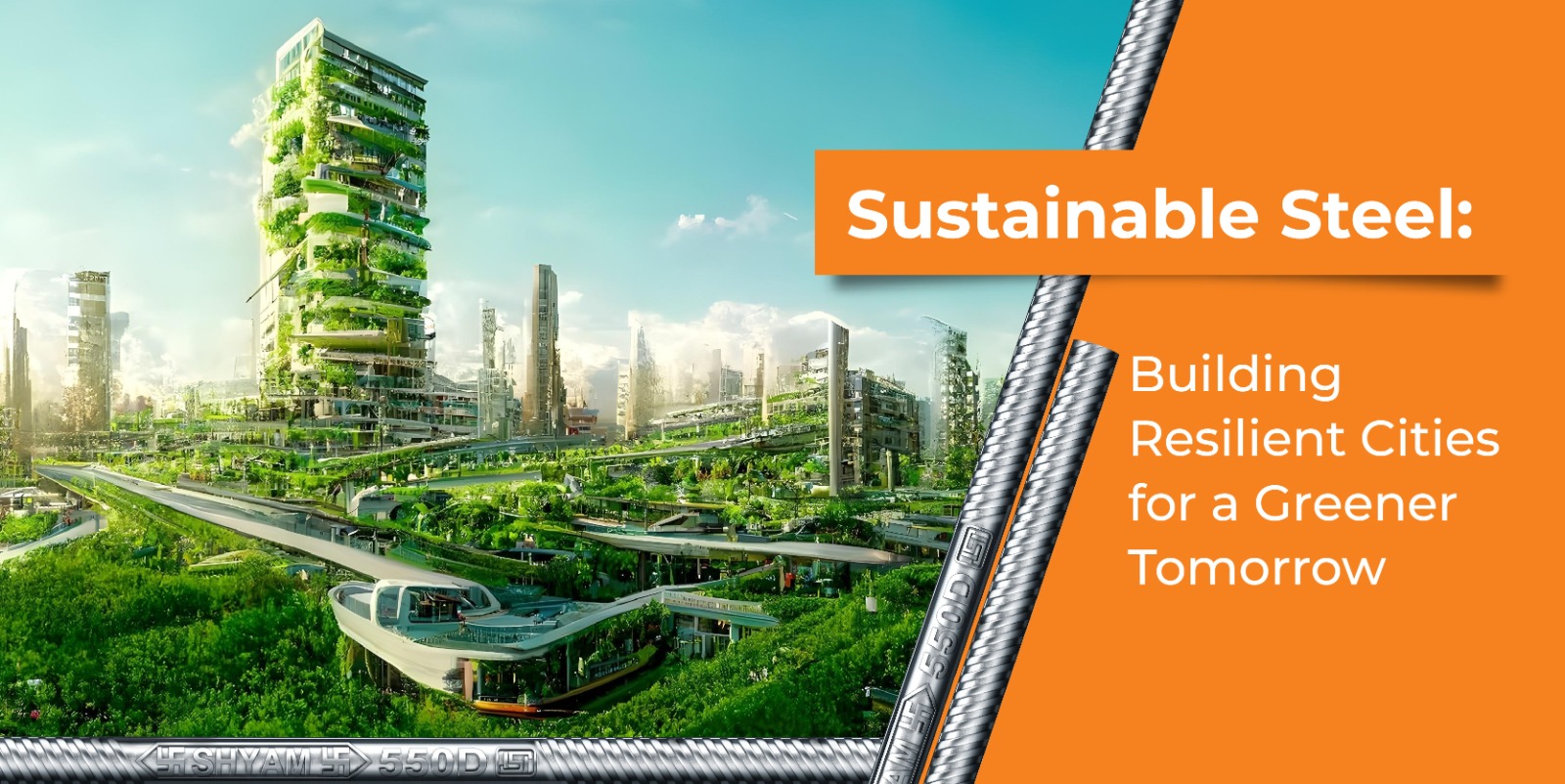Sustainable Steel: Building Resilient Cities for a Greener Tomorrow
In a world where cities are growing more rapidly and climate shifts are occurring, how we construct buildings is more important. The cities are projected to accommodate almost 70% of the world’s population by the year 2050. That’s a considerable number. Thus, the materials we use for the buildings, roads, and other infrastructures matter greatly.
They should be strong as well as resilient. Steel is one such material that has been leading the way for a long time. They are not just maintaining the sturdiness of the buildings but also aiding in quicker development of the buildings.
What is Sustainable Steel?
Sustainable steel means steel made in a way to minimize environmental influence at each and every step. Be it from mining through processing to utilization and even recycling. Sustainable steel is all about being strong without losing sustainability.
However, technological advancements have ensured steel production with reduced carbon emissions, lower energy consumption and a near-closed loop for recycling. The fact that steel is infinitely recyclable has many advantages.
Unlike many buildings that degrade over time and lose their quality during renovation, steel retains its properties. This is highly beneficial for the cities aiming to be both durable and eco-conscious.
Why Steel Matters in Urban Development?
Cities are complex to build. They need a good connection to transport networks, buildings, bridges, sewage systems, etc. All these demand materials that can withstand time, stress and natural disasters. Steel has an incredible strength-to-weight ratio that fits into place.
However, beyond its strength, steel is known for its flexibility. Architects and builders love steel because it helps them to dream and achieve bigger. Think of the longer towers, large buildings, and more open spaces- all possible due to steel.
Imagine using a material that is capable but also very sustainable. That’s the future that sustainable steel offers.
Green Steel: A Step Towards Decarbonization
The emergence of green steel is one of the most thrilling new trends in the steel industry. Conventional steel production is very carbon-intensive and uses a lot of coal in blast furnaces. But with new processes such as hydrogen-based direct reduction of iron, it can be a real game changer.
Countries like Sweden are already piloting zero-emission steel projects. Several global giants are also investing in cleaner production methods. These steps are crucial if the cities meet the net-zero targets and reduce their dependency on fossil fuels.
Circular Economy and Steel
The basic idea of circular economy is very simple: waste nothing. However, implementing it is very challenging. However, steel makes it easier for the customers. Nearly 90% of the steel nowadays is recovered and recycled globally. This means that the steel used in an old building can easily be found in a new bridge with minimal environmental and processing costs.
Also, steel buildings are easily demountable. Thus, when a building is at the end of its lifespan, steel elements can be removed easily, reused and recycled without being sent to a landfill.
Resilience in the Face of Climate Change
Sustainable steel is not just about environmental metrics. It’s all about resilience. As the rate of climate change increases and so do the frequency and severity of natural disasters, our cities must be constructed so that they can withstand them.
Steel buildings are more resistant to floods, earthquakes and fire than a lot of traditional materials. Being resilient has several benefits: cheaper maintenance, longer lifespan, and less need to rebuild. It translates directly into less waste and reduced emissions over time.
Steel in Action: Real-World Examples
Cities around the world are already embracing steel as a sustainable solution. Some of the examples are as follows.
- Singapore has already adopted prefabricated steel modules for their buildings and developments. It greatly reduces on-site waste and speeds up the construction.
- The Edge in Amsterdam, also referred to as the world’s greenest office building, employs steel for its energy-efficient and flexible design.
- The majority of the metro projects in cities such as Mumbai and Delhi in India rely extensively on steel. Apart from its strength, steel is also favored due to its recyclable nature and quick construction.
Final Thoughts: The Road Ahead
The transition to sustainable cities does not happen overnight. It requires a fundamental shift in how we think, design and build the structure. However, steel is strong, adaptable, and increasingly green, and it offers a cleaner and greener path forward.
Governments, private and even the urban sectors need to continue investing in cleaner steel production, stronger recycling systems and smarter usage. Apart from this, public awareness is also very crucial. Once the citizens understand the value of sustainable materials, they can demand greener buildings and also support responsible developments. It also helps in shaping cities that are not just livable but also lovable.

